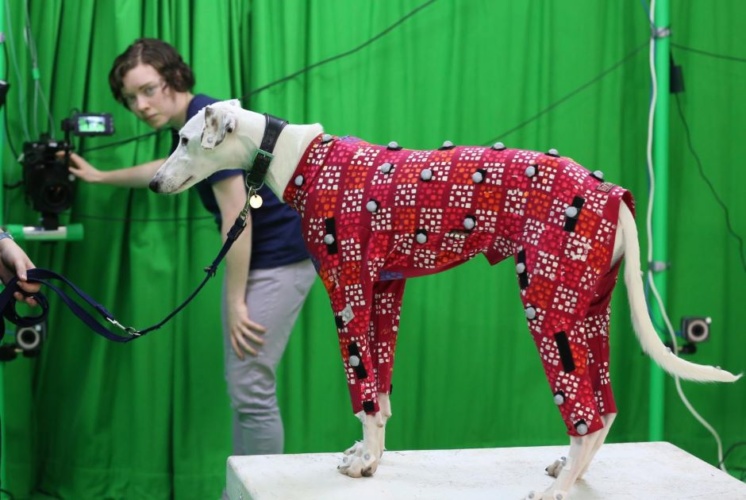
Developed at Bath University, the software could also be used to put digital representations of dogs into films and video games.
3D motion captured without markers
In the entertainment industry actors wear a suit dotted with white markers which are then precisely tracked in 3D space by multiple cameras taking images from different angles. Movement data can then be transferred onto a digital character for use in films or computer games.
Similar motion capture technology is used by biomechanics experts to track the movement of elite athletes during training, or to monitor patients' rehabilitation from injuries. However, these technologies - particularly when applying them to animals - require expensive equipment and dozens of markers to be attached.
Computer scientists from CAMERA, Bath University's motion capture research centre, digitised the movement of 14 different breeds of dog which were residents of the local Bath Cats' and Dogs' Home (BCDH).
Wearing special motion capture suits with markers, the dogs were filmed under the supervision of their BCDH handlers doing a range of movements.
According to Bath University, they used these data to create a computer model that can accurately predict and replicate the poses of dogs when they're filmed without wearing the motion capture suits. This model allows 3D digital information for new dogs - their shape and movement - to be captured without markers and expensive equipment, but instead using a single RGBD camera. Whereas normal digital cameras record the red, green and blue (RGB) colour in each pixel in the image, RGBD cameras also record the distance from the camera for each pixel.
In a statement, PhD researcher Sinéad Kearney said: "This is the first time RGBD images have been used to track the motion of dogs using a single camera, which is much more affordable than traditional motion capture systems that require multiple cameras.
"This technology allows us to study the movement of animals, which is useful for applications such as detecting lameness in a dog and measuring its recovery over time.
"For the entertainment industry, our research can help produce more authentic movement of virtual animals in films and video games. Dog owners could also use it to make a 3D digital representation of their pet on their computer, which is a lot of fun!"
The team presented their research at the CVPR (Computer Vision and Pattern Recognition) conference on 17 &18 June.
The team has also started testing their method on computer-generated images of animals including horses, cats, lions and gorillas.




Red Bull makes hydrogen fuel cell play with AVL
Formula 1 is an anachronistic anomaly where its only cutting edge is in engine development. The rules prohibit any real innovation and there would be...